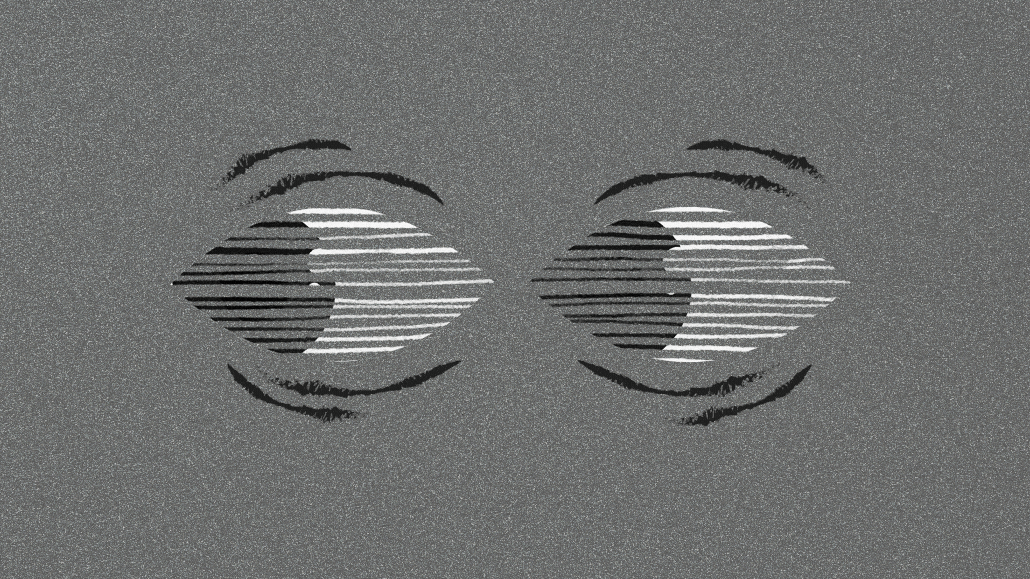Attention metrics step forward in guidelines — as their value is questioned

Last week, Karen Nelson-Field, the founder of one of the attention metrics firms in the marketing landscape — Amplified Intelligence — posted an enthusiastic note on LinkedIn, saying that the IAB and the Media Rating Council (MRC) have “agreed to collaborate on the Attention Task Force,” which will lead to the drafting and development of industry measurement guidelines for accreditation purposes.
“Our work begins this September,” Nelson-Field wrote, quoting Angelina Eng of the IAB, who had written to her with the good news.
Clearly the burgeoning field of attention metrics, which has been adopted by more publishers, brands and agencies in recent months in the pursuit of reaching consumers more effectively, could be lended an added level of legitimacy to their offerings with accreditation.
The IAB is in the process of issuing a set of measurement guidelines on attention, breaking them down into four parts: visual and audio tracking; physiological/neurological observations; data or proxy signals and survey-based brand campaign studies, explained said Angelina Eng, vp of measurement, addressability and the data center at the IAB.
Eng said the first of them, addressing data/proxy signals, has already been released, and added that new guidelines on visual/audio tracking and physiological/neurological will be put out by first quarter 2025.
Meantime, Ron Pinelli, MRC’s svp of digital research and standards/associate director, said the MRC is already working to accredit several providers, including IAS and DoubleVerify — while others are in the early stages of seeking possible accreditation, including Adelaide, another attention metrics provider. “This is a great step forward for the industry towards a broader acceptance of attention metrics,” said Marc Guldimann, CEO of Adelaide.
Both the IAB and MRC executives stressed that the work they are undertaking with the major attention providers revolves around voluntary guidelines and are not mandatory.
“We’re not going to be too prescriptive — I don’t think we’ll come up with new viewability guidelines and say that attention equals this or that,” said Eng. “What it likely will end up being is, when you’re measuring attention, here’s a set of metrics and data elements that are required … Let’s use the same common nomenclature and taxonomy, and so that when we’re talking about things, we’re all speaking the same language.”
Pinelli, who breaks down attention measurement into just two camps — data/proxy signals, and biometric (which incorporates neuro/physiological) — boiled down what the MRC needs to understand before it can consider accrediting any attention provider’s approach: 1. It needs to be based on viewability or audability; 2. It needs to have something in the measurement that confirms the presence of an actual user or person; and 3: It requires the highest level of filtration, because it should be free of robotic activity, fraud and valid activity.
“The logical next step [between IAB and MRC] is, all right, let’s produce some formalized guidance for measurement under these two techniques,” said Pinelli. “So this work with IAB isn’t to enable auditing and accreditation. We’ve already done that. It’s to more consistently put all of the guidance we’ve been enforcing through those audits in one place, and also now that we’ve enumerated all the vendors that are out there with IAB, updating that for anything that we haven’t yet experienced in our auditing.”
Despite the progress that some in the industry celebrated, it didn’t take long for Byron Sharp, a noted professor of marketing and director of the Ehrenburg-Bass Institute in Australia — who’s been known to be a bit of a bomb-thrower by challenging accepted norms of marketing — to pooh pooh the relative merits of attention, arguing in a paper he released that the value of attention metrics are overrated. His point — and this is an oversimplification: the more an advertiser optimizes toward attention, the less effective attention becomes as a metric.
The best analogy to his point looks at the how attention can influence creative decisions. Carl’s Jr., a West coast burger chain years ago made a Super Bowl spot featuring a bikini-clad woman munching lasciviously on a burger. It’s an understatement to say the ad drew a ton of attention. But it was the wrong kind — it didn’t connect with potential or likely Carl’s Jr. customers, and the ad was pulled.
Ironically, attention could almost be better used to filter out ineffective ads. “Attention is different in that it’s not binary. Once you cross it, there’s a spectrum, there’s a degree of attention,” said Pinelli. “Which of these [ads] had any degree of attention? If they had no degree of attention, then that’s not going to lead to an outcome. That might be the most immediate value.”
More in Media Buying

As Integral Ad Science marks its fourth anniversary on the Nasdaq, speculation mounts over its future
Efforts are underway to take IAS private but there are varying levels of interest from private equity groups.

Media Buying Briefing: Two years later, media buyers still aren’t fully sold on The Trade Desk’s Kokai platform
Two years after its launch, The Trade Desk’s Kokai tool has acquired a mixed reputation among the agency media buyers it was designed for.

The Rundown: The regulatory hurdles still in the way of the Omnicom-IPG merger
British, Australian and EU regulators are all looking into mega agency merger.







